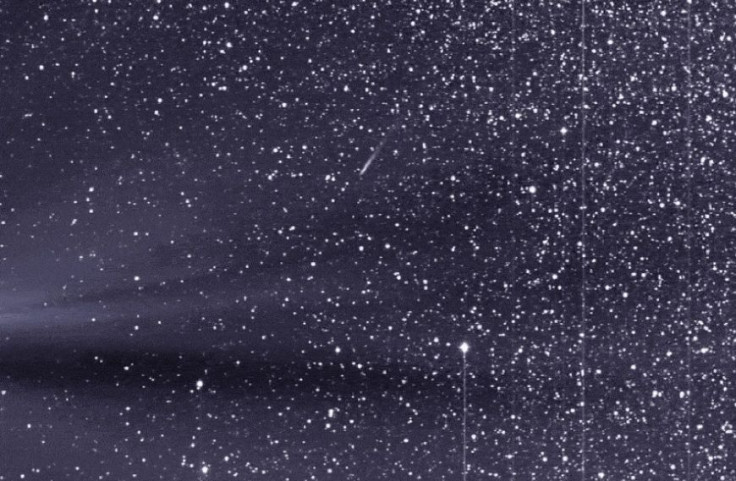Solar Winds, Planet Mercury and The Comet ATLAS Spotted By NASA’s Solar Spacecraft
KEY POINTS
- NASA's spacecraft captured images of comet ATLAS, Planet Mercury and solar winds
- The images were taken as the comet approached the Sun
- The Solar Orbiter crossed the comet's tail when the images were taken
NASA captured images of the comet known as ATLAS as it approached the Sun during its orbit. Aside from the comet, they also spotted a stream of solar winds, and the planet Mercury.
The Solar Terrestrial Relations Observatory (STEREO) was a mission that comprised of two identical satellites designed to observe the Sun. Although one satellite was lost in 2014, the other one, known as STEREO-A, is still operational.
The latest images captured by the robotic spacecraft show various notable cosmic objects. In the short animated footage made by NASA, we can see the comet ATLAS moving from the top right of the frame towards the Sun, which was outside of STEREO-A’s field of view.
As the comet flies towards the Sun, it passes through gusts of solar winds, which appear as streams flowing from the left to right side of the video. Aside from ATLAS and solar winds, Mercury also appears in the footage as a bright stationary dot.
“In the animated image, ATLAS emerges from the top of the frame and approaches the Sun — off-camera to the left — against gusts of solar wind. Its dust tail, which reflects sunlight, appears white,” NASA explained. “Mercury is also visible as a bright dot emerging from the left against the stationary starfield. The vertical streaks in the image are artifacts created by saturation from bright background stars.”
According to NASA, they took the images with the STEREO-A spacecraft from May 25 to June 1. During this period is when the comet flew past the Sun.
The agency noted that when the spacecraft captured the images, NASA and the European Space Agency’s Solar Orbiter spacecraft intersected the path of the comet. Unfortunately, the rare flyby was outside of STEREO-A’s view.
NASA also noted that it is waiting for the data collected by the Solar Orbiter from ATLAS’ tail. It was the spacecraft’s first scientific operation since they launched it earlier this year.
“While STEREO recorded this footage, Solar Orbiter crossed one of comet ATLAS’s tails,” NASA stated. “Launched in February 2020, the spacecraft wasn’t scheduled to enter full science operations until June 15, but engineers adjusted Solar Orbiter’s testing schedule and turned on its four most relevant instruments for the encounter.”

© Copyright IBTimes 2024. All rights reserved.





















